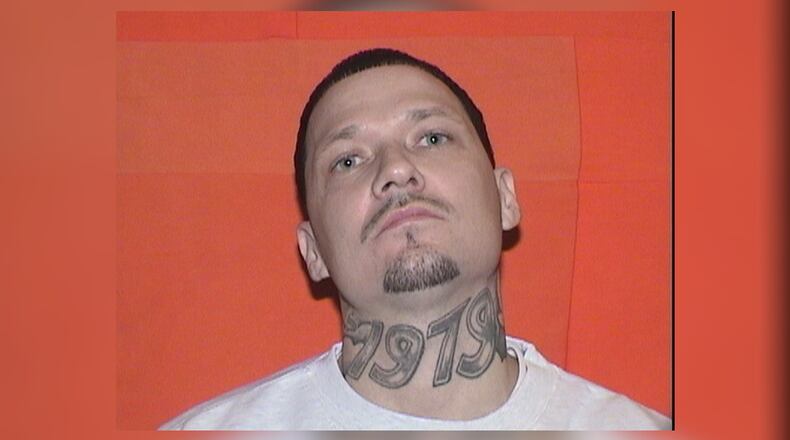“We have people who have completely rehabilitated themselves and left behind what they were doing before but they have these tattoos,” she said. “When I was asking one fellow if he would do tattoo removal if we had it, he started crying.”
Funding could come from the DRC medical budget or from fees collected from inmates when they purchase items from the prison commissary, she said.
>>RELATED: Prisons grapple with tattoo problems
Chambers-Smith said the state will request proposals from those who can provide the removal services.
Inmate John E. Peters, Jr., 60, said he started self-tattooing when he first arrived in prison 30 years ago in an attempt to fit in. “Somewhere along the line I figured I don’t fit in and I don’t want to fit in,” Peters said, adding that he would like to have some of the ink removed.
According to Jails to Jobs, there are more than 300 free or low-cost tattoo removal programs in 42 states. Some prison systems offer removal as part of a gang renunciation, said former Ohio DRC Director Gary Mohr.
The Association of State Correctional Administrators surveyed state prison systems in February 2017 on whether they have an offender tattoo removal program. None of the 21 states responding to the survey offer such services.
The average cost of tattoo removal in 2017 was $401, according to the American Society for Aesthetic Plastic Surgery.
>>RELATED: Woman whose face tattoos made national news behind bars in Miami Valley
Ohio DRC rules prohibit inmates from possessing tattooing equipment and from getting tattoos inside the prisons. Non-sterile equipment can lead to infections and the spread of disease. Also, tattoos can signal gang membership.
Inmates can create battery-powered tattoo guns using simple items, such as a short piece of wire from a guitar string, the motor of an electrical fan, a needle and the sleeve on a pen. They get ink from pens or by making it by burning materials and using the soot.
>>RELATED: Gov. DeWine calls for parole board reform after DDN story
Prison tattooists often get paid for their work through deposits to their commissary accounts. Tattooing allows inmates to make money, barter for other contraband, display gang affiliations and decorate their bodies with words and designs that range in quality, complexity and symbolism, officials said.
Staff writer Cornelius Frolik contributed to this report.
About the Author

